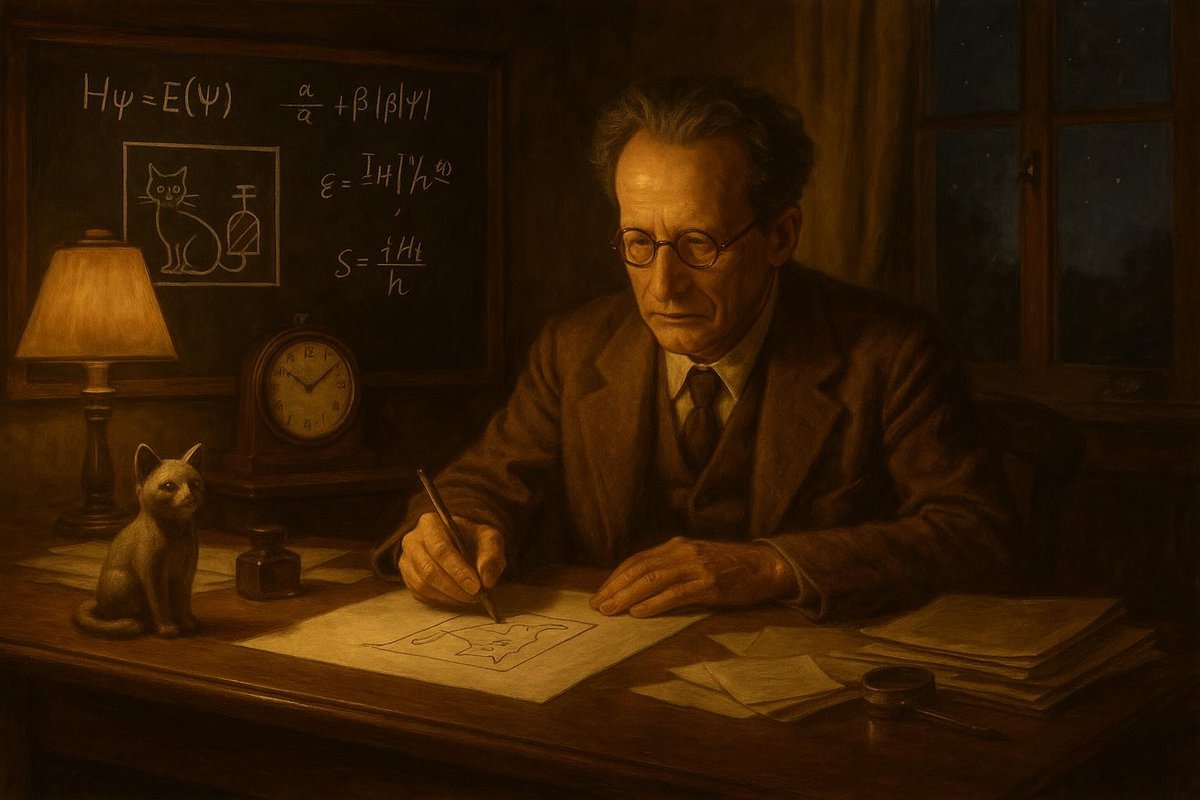
Imagine a world where the most fundamental laws of nature remain hidden from our senses. We encounter such a case in the famous thought experiment known as Schrödinger’s cat. This theoretical scenario, first posited in 1935, is emblematic of the mind-bending peculiarities of quantum mechanics. But does it genuinely unravel the mysteries of quantum superposition, or simply expose the limitations of human cognition?
Hypothesis & Context
The story of Schrödinger’s cat begins with a paradox at the heart of quantum mechanics. Initially, the world of physics was guided by the deterministic principles of classical mechanics, where everything seemed orderly and predictable. However, the early 20th century ushered in quantum mechanics, where particles could exist in multiple states simultaneously — a concept known as superposition.
- Classical mechanics dominated prior to quantum theory.
- Quantum mechanics introduced uncertainty and duality.
- Superposition suggests particles can be in multiple states at once.
Erwin Schrödinger, an Austrian physicist, sought to illustrate these perplexing concepts through a thought experiment. He imagined a cat placed in a sealed box with a radioactive atom, a Geiger counter, and a vial of poison. If the atom decayed, the counter would trigger, breaking the vial and killing the cat. Until observed, the cat was theoretically both alive and dead — existing in a state of superposition.
Setup & Method
Schrödinger’s cat is more than just a feline dilemma; it’s a fascinating mental model that raises questions about observation and reality. By confining a cat to a quantum experiment, Schrödinger invites us to consider the limits of quantum mechanics’ strange principles.
- Cat in a box with poison and radioactivity.
- Atom decay governs the cat’s fate.
- The cat’s state is unknown until observed.
This scenario bridges quantum mechanics with everyday experience, creating a vivid analogy for superposition. As Schrödinger himself noted, the experiment was never meant to be taken literally. It was a critique of the Copenhagen interpretation, which suggested a system exists in all possible states until measured. Schrödinger voiced skepticism about this idea, highlighting it with his metaphorical cat.
Results & Reactions
The thought experiment has sparked debate and curiosity for decades. While some see it as a profound illustration of quantum principles, others view it as a critique of their interpretational limits. The notion that observation defines reality challenges our understanding of the universe.
- Highlights the role of observation in quantum states.
- Critiques the Copenhagen interpretation.
- Inspires countless discussions and theories.
Albert Einstein, who famously quipped, “God does not play dice,” found Schrödinger’s cat aligned with his skepticism of quantum randomness. Meanwhile, physicists like Niels Bohr defended the probabilistic nature of quantum mechanics, arguing that observation impacts reality. This diverse range of reactions underscores the thought experiment’s significance in philosophical and scientific discourse.
Implications
As intriguing as Schrödinger’s cat might be, it underscores the tension between quantum mechanics and our cognitive faculties. On one hand, it invites us to contemplate the universe’s complexity. On the other, it highlights our struggle to reconcile quantum enigmas with classical intuition.
- Sparks philosophical debate on observation and reality.
- Challenges the limits of human cognition.
- Questions the completeness of quantum theory.
Interestingly, the paradox doesn’t provide definitive answers. Instead, it raises more questions, fueling further research and discussion. As physicist Richard Feynman once said, “If you think you understand quantum mechanics, you don’t understand quantum mechanics.” Perhaps Schrödinger’s cat’s true legacy lies in its capacity to challenge our perceptions, encouraging continual exploration of the quantum world.
Fuel Someone Else’s Curiosity
Schrödinger’s cat continues to captivate and perplex, offering fertile ground for debate and discovery. Share this article with others, and engage them in the conversation. Whether you’re a seasoned physicist or a curious mind, there’s always more to learn about the quantum universe. Let’s unravel these mysteries together!

Leave a Reply